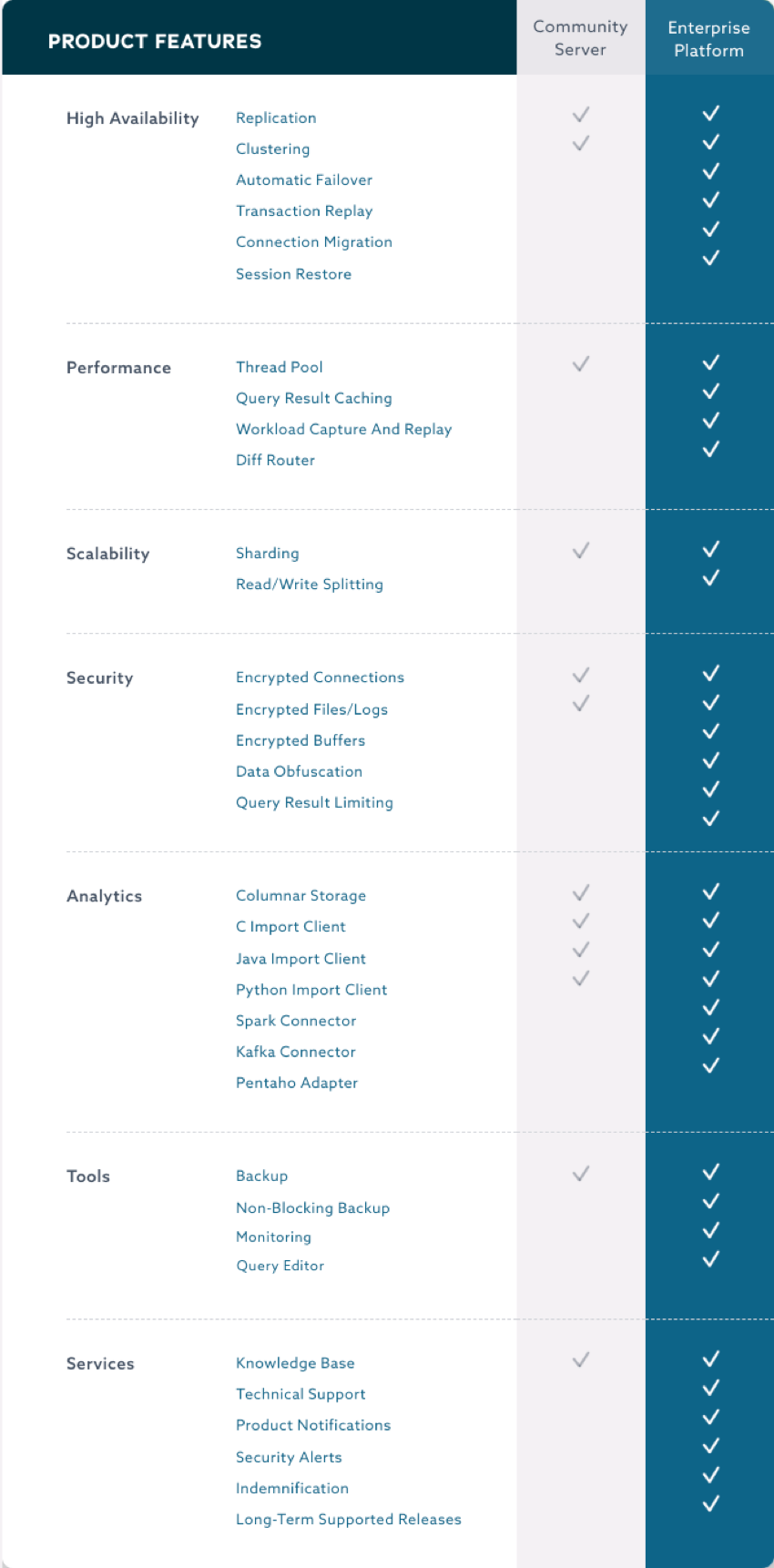MariaDB Community Server is one of the most popular database servers in the world. The MariaDB database has been downloaded over 1 billion times and is the default over MySQL in the majority of Linux distributions. Created by MySQL’s original developers, MariaDB is compatible with MySQL and Oracle, and is guaranteed to always be open source.
MariaDB’s Open Source Database Commitment
MariaDB Community Server is released under the GNU Public License v2. Throughout its history, MariaDB has shown its commitment to open source and the open source community, developing over 90% of the code for MariaDB Community Server, and partnering closely with the MariaDB Foundation around adoption and community engagement. MariaDB Community Server is guaranteed open source, forever.
Open Source Built for the Enterprise
Get started in minutes in any environment without a need to retool or reskill your database team – it’s no wonder MariaDB Community Server is used to power major applications around the world including Wikipedia and WordPress environments. Because of its familiarity and shared MySQL ecosystem, developers and database administrators can effectively start using MariaDB immediately. However, when teams want to gain valuable time and focus on strategic business initiatives, it’s time to upgrade to MariaDB’s enterprise solution, MariaDB Enterprise Platform.


